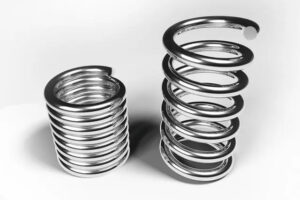Maximizing the Lifespan of Torsion Springs: Key Considerations for Optimal Performance

Torsion springs play a critical role in various applications, from garage doors to industrial machinery. Understanding their lifespan and implementing measures to maximize their longevity is crucial for ensuring efficient and reliable operation. This article aims to explore important factors that influence the lifespan of torsion springs and provide recommendations to extend their service life.
Understanding Torsion Springs:
Torsion springs are helical springs specifically designed to produce torque or rotational force when twisted. They store mechanical energy as they are twisted and release it when the torque is released, enabling them to generate the required force for countless applications. These springs are typically subjected to repeated cycles of loading and unloading, which affects their longevity.
Factors Affecting Torsion Spring Lifespan:
1. Material Selection:
The choice of material for torsion springs significantly impacts their lifespan. Common materials include high-carbon steel, stainless steel, and specialty alloys. Factors such as tensile strength, corrosion resistance, fatigue resistance, and temperature tolerance should be considered during material selection to ensure optimal performance and extended lifespan.
2. Design Considerations:
Proper design plays a vital role in maximizing the lifespan of torsion springs. Design elements such as wire diameter, coil diameter, number of active coils, and pitch influence the stress distribution, load capacity, and fatigue resistance of the spring. Well-designed springs distribute stress evenly, reducing the likelihood of premature failure.
3. Operating Conditions:
The environment in which torsion springs operate significantly impacts their lifespan. Factors like temperature fluctuations, humidity, exposure to corrosive substances, and vibration can affect spring performance. Implementing protective coatings, lubrication, and regular maintenance can help mitigate the detrimental effects of harsh operating conditions and extend spring life.
4. Stress Levels and Cycles:
The stress level and number of cycles the torsion spring undergoes directly affect its lifespan. Operating within the recommended stress range and avoiding excessive twisting or overloading the spring is essential to prevent premature fatigue failure. Understanding the specific application’s demands and calculating the spring’s expected cycles can help determine an appropriate spring design for optimal performance.
5. Proper Installation and Maintenance:
Correct installation techniques, including proper winding and alignment, are crucial for ensuring even distribution of stress and preventing premature wear. Regular inspection, lubrication, and cleaning of the spring can identify issues early and prevent potential failures. Consultation with a professional spring manufacturer or expert can provide valuable guidance on installation and maintenance best practices.
Conclusion:
Torsion springs are vital mechanical components used in numerous applications, requiring careful consideration to maximize their lifespan. By selecting the appropriate materials, optimizing design parameters, considering operating conditions, managing stress levels and cycles, and implementing proper installation and maintenance practices, the lifespan of torsion springs can be significantly extended. Prioritizing the longevity of these springs not only ensures the continued efficiency and reliability of various systems but also reduces downtime and replacement costs. It is essential to work with reputable spring manufacturers and seek expert advice when designing, installing, and maintaining torsion springs for optimal performance and longevity.






